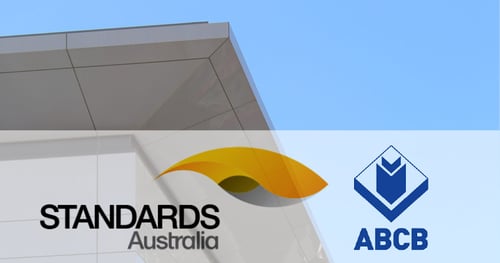Last week, The Australian Building Codes Board (ABCB) issued an Advistory Note to give the industry guidance on the use of Deemed-to-Satisfy provisions related to fire performance of external walls (including cladding on external walls) of Type A and Type B Construction.
As manufacturers of external wall cladding, we were pleased to see the ABCB providing the industry with national guidance on the use of external cladding. We have extensively reviewed the Advisory Note and here are the highlights from the report and our comments on what you should know to ensure compliancy on current and future projects:
1. A building component is considered part of an external wall if it is integral (not an addition) to the construction of the wall. The following elements are considered part of an external wall:
i) external cladding including masonry, concrete panels, composite panels and sheet materials
ii) framing
iii) spandrels
iv) insulation
v) internal lining (e.g. plasterboard) of an external wall.
Comment: All parts integral to an external wall must be non-combustible or meet C1.12 criteria and therefore be deemed non-combustible. These include all wall components, not just those listed above, from the outer most surface to the inner most surface of the wall.
2. The types of attachments identified in Specification C1.1 Clause 2.4(a) are:
i) a finish or lining to a wall or roof
ii) a sign, sunscreen, blind or awning (incidental attachments)
iii) other attachments.
Comment: Attachments may be combustible with certain limitations.
A ‘lining’ is a covering applied to a wall or roof. An example of a lining covered by Specification C1.1 Clause 2.4(a) is decorative panelling fixed to the internal or external surface of an external wall. Therefore a panel with low combustibility such as Aluminium Composite Panel (ACP) with ‘FR’, ‘PLUS’ or ‘A2’ cores can be installed as an attachment to an external wall, provided clauses 3 and 4 below are met.
3. A combustible finish or lining is not permitted unless it complies with Specification C1.1 Clauses 2.4(a)(i), (ii) and (iii).
Specification C1.1 Clause 2.4(a) refers to attachments that are incidental in nature such as a sign, sunscreen, blind or awning. Examples of other attachments covered by Specification C1.1 Clause 2.4(a) are:
i) gutters and downpipes
ii) light fittings fixed to an external wall.
Comment: Attachments are permitted to be combustible if:
the component is exempted under C1.10 or complies with the fire hazard property requirements of Specification C1.10. Table 1 of Specification C1.10 specifies which Clause of Specification C1.10 applies to various building components.
4. i) the component is not located near or directly above a required exit so as to make the exit unusable in a fire (Specification C1.1 Clause 2.4(a)(ii))
ii) the component does not constitute an undue risk of fire spread via the façade of the building (Specification C1.1 Clause 2.4(a)(iii)).
Comment: The above two points require professional evaluation and determination in most cases. For example, an expanded polystyrene (EPS) attachment located anywhere above an exit, if burning, will drip onto that exit rendering it unusable.
The requirements of Specification C1.1 Clause 2.4(a)(ii) and (iii) are complex and often difficult to analyse. Quite often the services of an appropriately qualified person (e.g. a fire safety engineer) may need to be sought to obtain the appropriate evidence that demonstrates that the proposed façade design complies with these clauses.
If you need further clarification on these changes, please contact one of our façade consultants to discuss your project in further detail.



